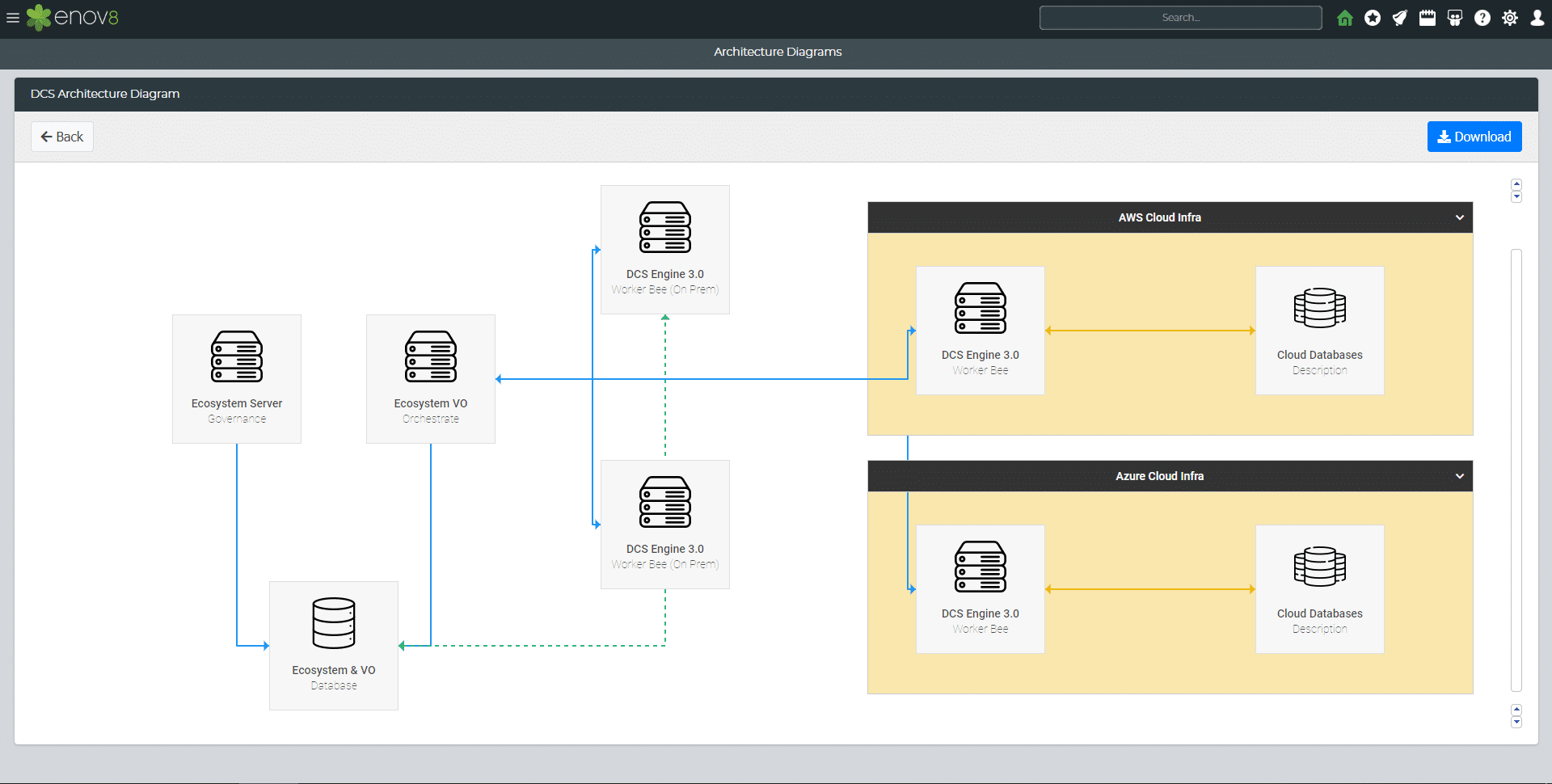
Embracing IT Architecture in the Lower SDLC Environments
December, 2023
by Jane Temov.
Jane Temov is an IT Environments Evangelist at Enov8, specializing in IT and Test Environment Management, Test Data Management, Data Security, Disaster Recovery, Release Management, Service Resilience, Configuration Management, DevOps, and Infrastructure/Cloud Migration. Jane is passionate about helping organizations optimize their IT environments for maximum efficiency.
In the dynamic world of software development, IT Architecture has traditionally been viewed through the lens of production environments. This perspective focuses on designing and maintaining systems that are already in the hands of users, ensuring their reliability, efficiency, and scalability. However, this production-centric approach overlooks a crucial aspect of the Software Development Life Cycle (SDLC) – the non-production environments. These include stages such as development, testing, and staging, which are equally critical to the success of any software project.
Innovate with Enov8
A Platform of Insight
Managing your IT & Test Environments, Releases & Data.
The concept of IT Architecture encompasses much more than just the final, customer-facing product. It is a comprehensive framework that, when applied effectively, can significantly enhance the entire software development process. By extending the principles of IT Architecture to non-production environments, organizations can unlock a plethora of benefits that not only improve the quality of the end product but also streamline the development process itself. This broader application of IT Architecture principles fosters a more holistic, efficient, and effective approach to software development.
The Importance of IT Architecture in Non-Production Environments
Non-production environments, often seen as mere stepping stones to the final product, play a pivotal role in the SDLC. These environments, including development, testing, and staging, are where ideas come to life, where bugs are identified and fixed, and where the product takes shape before it reaches the end user. Traditionally undervalued in the broader scope of IT Architecture, these stages are now gaining recognition for their significant impact on the overall quality and success of software projects.
Integrating IT Architecture principles in these lower environments offers numerous advantages. Firstly, it provides a structured framework that guides the development process, ensuring that each stage of the SDLC aligns with the overall objectives and standards of the project. This alignment is crucial for maintaining consistency and quality throughout the development process.
Furthermore, applying architectural principles in non-production environments enhances efficiency. By designing these environments with the same care and attention as production environments, developers and testers can work in a more stable, predictable, and well-organized setting. This stability reduces the time and resources spent on troubleshooting and resolving environment-related issues, allowing teams to focus more on actual development and innovation.
Enov8’s insights into the benefits of applying architectural principles in lower environments underscore this point. They highlight how a well-structured IT Architecture can lead to more efficient use of resources, better risk management, and an overall smoother development process. By treating non-production environments with the same level of importance as production environments, organizations can ensure a more seamless transition from development to deployment, ultimately leading to a more robust and reliable final product.
Benefits of Integrating IT Architecture Across the SDLC
The integration of IT Architecture principles across the Software Development Life Cycle (SDLC) brings forth a range of benefits that transcend traditional boundaries and enhance the overall efficacy of software development. This holistic approach ensures that each stage of the SDLC, from inception to deployment, is optimized for performance, reliability, and scalability.
Visibility and Literacy
One of the foremost benefits of this integration is enhanced visibility and literacy across all stages of development. A comprehensive IT Architecture framework provides a clear overview of the systems, processes, and dependencies involved in the project. This transparency is crucial for identifying potential bottlenecks, understanding resource allocation, and tracking progress. It fosters a culture of knowledge sharing, where team members are well-informed about the workings of each component, leading to more effective collaboration and decision-making.
Better Analysis, Decision Making, and Troubleshooting
An integrated approach to IT Architecture facilitates better analysis and decision-making throughout the SDLC. With a clear architectural blueprint, teams can more easily identify areas that require improvement, anticipate challenges, and devise effective solutions. This proactive stance is vital for efficient troubleshooting, ensuring that issues are addressed promptly and do not escalate into larger problems. Enov8’s resources on Architectural Blueprinting and TEM Modelling provide insights into how these practices can lead to more informed decisions and effective problem-solving.

Enhancing Site Reliability and Reducing Outages
The application of IT Architecture principles across the SDLC significantly contributes to the reliability and stability of the final product. A well-architected system is inherently more resilient to failures and better equipped to handle unexpected loads or disruptions.
Reducing Outages
By addressing potential issues in the earlier stages of development, the likelihood of outages in the production environment is greatly diminished. This proactive approach involves stress-testing systems under various conditions, ensuring that they can withstand real-world scenarios. Regular assessments and refinements based on architectural guidelines help in identifying vulnerabilities early, thus preventing downtime and ensuring continuous service availability.
Enhancing Site Reliability
A holistic architectural perspective also enhances site reliability. By ensuring that each component of the system is designed and tested according to best practices, the overall robustness of the site is improved. This includes aspects like load balancing, redundancy, and failover mechanisms, which are essential for maintaining uptime and delivering a consistent user experience.
Enov8’s solutions, as discussed in their Enterprise Architect section, exemplify how a comprehensive approach to IT Architecture can lead to more stable and reliable sites. By integrating architectural best practices throughout the SDLC, from lower to production environments, organizations can significantly reduce the frequency and impact of outages, thereby enhancing the reliability and credibility of their software solutions.
Streamlining Delivery with Fit-for-Purpose System Environments
The integration of IT Architecture principles throughout the Software Development Life Cycle (SDLC) significantly streamlines the delivery process. This is achieved by ensuring that each environment – development, testing, staging, and production – is optimally designed and aligned with its specific purpose.
Fit-for-Purpose Design
In a well-architected SDLC, each environment is tailored to meet its unique requirements. For instance, the development environment is configured to facilitate creativity and rapid prototyping, while the testing environment is designed for robustness and error detection. This specialization ensures that each stage of the lifecycle is equipped with the necessary tools and resources, leading to more efficient and effective development practices.
Efficiency in Development and Deployment
By aligning IT architecture with each stage of the SDLC, the transition from one phase to another becomes smoother and more predictable. This alignment minimizes the risk of integration issues and ensures that the transition from development to production is seamless. As highlighted in Enov8’s IT Test Environment Management, this approach leads to a reduction in the time and resources required for deployment, allowing for quicker releases and faster time-to-market.
Conclusion
As we have explored, the integration of IT Architecture principles across the entire Software Development Life Cycle (SDLC) is not just a theoretical concept but a practical, impactful strategy. This holistic approach enhances every stage of software development, from initial design to final deployment, leading to more efficient, reliable, and successful outcomes.
The benefits of this integration are manifold. Enhanced visibility and literacy across teams foster a deeper understanding of the systems at play, leading to better decision-making and troubleshooting. The design of fit-for-purpose environments streamlines the development process,
Relevant Articles
DORA Compliance – Why Data Resilience is the New Digital Battlefield
How Enov8 Helps Financial Institutions Align with the EU's Digital Operational Resilience Act Executive Introduction As of January 2025, the EU's Digital Operational Resilience Act (DORA) has become legally binding for financial institutions operating across the...
Data Fabric vs Data Mesh: Understanding the Differences
When evaluating modern data architecture strategies, two terms often come up: data fabric and data mesh. Both promise to help enterprises manage complex data environments more effectively, but they approach the problem in fundamentally different ways. So what’s...
What Is Release Management in ITIL? Guide and Best Practices
Managing enterprise software production at scale is no easy task. This is especially true in today’s complex and distributed environment where teams are spread out across multiple geographical areas. To maintain control over so many moving parts, IT leaders need to...
Test Environment: What It Is and Why You Need It
Software development is a complex process that requires meticulous attention to detail to ensure that the final product is reliable and of high quality. One of the most critical aspects of this process is testing, and having a dedicated test environment is essential...
PreProd Environment Done Right: The Definitive Guide
Before you deploy your code to production, it has to undergo several steps. We often refer to these steps as preproduction. Although you might expect these additional steps to slow down your development process, they help speed up the time to production. When you set...
What is Data Tokenization? Important Concepts Explained
In today’s digital age, data security and privacy are crucial concerns for individuals and organizations alike. With the ever-increasing amount of sensitive information being collected and stored, it’s more important than ever to protect this data from...











